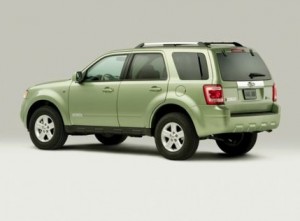
Ford Escape (Hybrid) 2012 Workshop Repair & Service Manual (COMPLETE & INFORMATIVE for DIY REPAIR) ☆ ☆ ☆ ☆ ☆
* COMPLETE, Absolutely No Missing Pages!
* Official Service INFORMATION You Can Count On!
* Customer Satisfaction GUARANTEED!
This high QUALITY official manual for Ford Escape 2012, Escape Hybrid 2012 is 100 percents COMPLETE and INTACT, no MISSING, CORRUPT pages, sections to freak you out! This manual is exactly as described. It is in the cross-platform PDF document format so that it works like a charm on all kinds of devices.
FORMAT: PDF
LANGUAGE: English
SIZE/PAGE: 5,380 pages
OS: Windows/Mac OS X/Linux/Android/iOS
INSTANT DELIVERY: A download link will be sent to you instantly after payment. Simply click on the link and save it to your computer. You can use this Manual as long as you wish with no restrictions.
CUSTOMER SATISFACTION: If there is ANY kind of problem with the item you purchased, just drop a quick email. Within HOURS the issue shall be taken care of.
PRINTABLE MANUAL WITH DIAGRAMS: Just print the manual out and start to work. You can also use the manual with your Tablet/Laptop in your garage.
REFUND/EXCHANGE POLICY: We sell high QUALITY products only. However if you encounter any problems with the item you purchased, another replacement link will be sent to you. If we’re at fault, you will get 100 percents refund.
Buy ☆THE BEST MANUAL ON THE INTERNET☆ from responsible seller and get instant download now without uncertainty or surprise.
This highly detailed workshop service repair manual for download contains virtually everything you will ever need to repair, maintain, rebuild, refurbish or restore Ford Escape 2012, Escape Hybrid 2012. All diagnostic and repair procedures and gives you access to the same information that professional technicians and mechanics have. You can view and print out the complete repair procedures with this workshop service repair manual Download – you do not need to be skilled with a computer.
EXCERPTS:
2012 Escape, Escape Hybrid
Workshop Manual
Quick Links
Introduction
Master DTC Chart
Specifications
Metrics
Torque Wrench Adapter Formulas
Acronyms
Alphabetical Index
Table of Contents
1: General Information
00: Service Information
2: Chassis
04: Suspension
05: Driveline
06: Brake System
11: Steering System
3: Powertrain
03: Engine
07: Automatic Transmission
08: Manual Transmission, Clutch and Transfer Case
09: Exhaust System
10: Fuel System
4: Electrical
12: Climate Control System
GROUP 03: Engine
SECTION 303-00: Engine System – General Information
SECTION 303-01A: Engine – 2.5L
SECTION 303-01B: Engine – 3.0L (4V)
SECTION 303-01C: Engine – 2.5L Hybrid
SECTION 303-03A: Engine Cooling
SECTION 303-03B: Engine Cooling – Hybrid
SECTION 303-04A: Fuel Charging and Controls – 2.5L
SECTION 303-04B: Fuel Charging and Controls – 3.0L (4V)
SECTION 303-04C: Fuel Charging and Controls – Hybrid
SECTION 303-05A: Accessory Drive – 2.5L
SECTION 303-05B: Accessory Drive – 3.0L (4V)
SECTION 303-05C: Accessory Drive – Hybrid
SECTION 303-06: Starting System
SECTION 303-07A: Engine Ignition – 2.5L
SECTION 303-07B: Engine Ignition – 3.0L (4V)
SECTION 303-08A: Engine Emission Control – 2.5L
SECTION 303-08B: Engine Emission Control – 3.0L (4V)
SECTION 303-08C: Engine Emission Control – Hybrid
SECTION 303-12A: Intake Air Distribution and Filtering – 2.5L
SECTION 303-12B: Intake Air Distribution and Filtering – 3.0L (4V)
SECTION 303-12C: Intake Air Distribution and Filtering – Hybrid
SECTION 303-13A: Evaporative Emissions
SECTION 303-13B: Evaporative Emissions – Hybrid
SECTION 303-14A: Electronic Engine Controls – 2.5L
SECTION 303-14B: Electronic Engine Controls – 3.0L (4V)
SECTION 303-14C: Electronic Engine Controls – Hybrid
SECTION 303-14B:
Electronic Engine Controls – 3.0L (4V)
SPECIFICATIONS
DESCRIPTION AND OPERATION
Electronic Engine Controls
DIAGNOSIS AND TESTING
Electronic Engine Controls
DTC Charts
PCM DTC Chart
REMOVAL AND INSTALLATION
Camshaft Position (CMP) Sensor
Crankshaft Position (CKP) Sensor
Powertrain Control Module (PCM)
Mass Air Flow (MAF) Sensor
Cylinder Head Temperature (CHT) Sensor
Heated Oxygen Sensor (HO2S) and Catalyst Monitor Sensor – Exploded View
Heated Oxygen Sensor (HO2S)
Catalyst Monitor Sensor
Variable Camshaft Timing (VCT) Oil Control Solenoid
Knock Sensor (KS)
Manifold Absolute Pressure (MAP) Sensor
Several types of plastic are in use for automotive application. However, all plastics will fall into 2 primary categories: thermoplastic or thermosetting plastic.
Thermosetting Plastic
Generally, thermosetting plastics are made with 2-part thermosetting resins. When mixed together, heat is generated, producing a cure that is irreversible. Because of this, thermosetting plastics will require the use of a 2-part adhesive for repair.
Sheet-Molded Compound
Sheet-Molded Composite (SMC) is a type of thermosetting plastic that uses glass fibers or nylon fibers in combination with thermosetting polyester resins. When fully cured, SMC is strong and rigid.
SMC is similar, but not identical, to fiberglass. Ford Motor Company uses SMC in components such as fenders, hoods and liftgates.
Thermoplastic Compounds
Thermoplastic compounds are manufactured by a process that is reversible. Thermoplastics can be remolded repeatedly by reheating. This characteristic of thermoplastics makes plastic welding a possible repair alternative. A repair of thermoplastic compounds is still possible through the use of 2-part adhesive and filler repair materials and reinforcements as needed. Thermoplastics are widely used in interior trim components, wheel flares, body side cladding and bumper covers.
Polyolefin
Polyolefins fall into the family of thermoplastics with one unique characteristic: an oily or waxy feel to the material when sanded or ground. Polyolefin lends itself very well to remolding through the use of heat.
Because of this, components made of this material lend themselves well to the possibility of plastic welding.
Most adhesive repair materials and paint will not bond to surface of a polyolefin unless an adhesion promoter specially formulated for plastic is first applied to the exposed raw surface. Otherwise, polyolefins are repaired like most other thermoplastics. Polyolefins are used in bumper covers, fan shrouds and wheel housings.
Proper identification of the various types of plastic is necessary to select the appropriate repair method(s) to carry out high quality plastic repairs. Refer to Plastics Identification in this section.